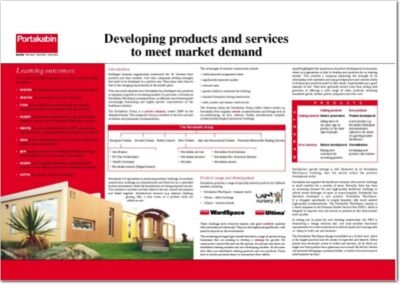Strategic drift refers to the gradual deviation of an organisation’s strategy from its original goals and objectives, often resulting in a misalignment with the external environment. This phenomenon can occur subtly over time, as businesses become increasingly entrenched in their established practices and fail to adapt to changing market conditions. The concept of strategic drift highlights the importance of maintaining a dynamic approach to strategy formulation and execution, ensuring that organisations remain responsive to both internal and external influences.
At its core, strategic drift is not merely a failure to execute a plan; it is a failure to recognise that the environment in which a business operates is constantly evolving. Factors such as technological advancements, shifts in consumer preferences, and competitive pressures can all contribute to this drift. As organisations become more focused on their existing strategies, they may overlook critical changes in the marketplace, leading to a disconnect between their strategic direction and the realities of their operating environment.
This misalignment can ultimately jeopardise an organisation’s long-term viability and success.
Summary
- Strategic drift refers to the gradual misalignment between a company’s strategy and its external environment, leading to a loss of competitiveness.
- Causes of strategic drift include complacency, resistance to change, and failure to adapt to market shifts and technological advancements.
- Strategic drift can have detrimental effects on businesses, such as declining market share, loss of customer loyalty, and decreased profitability.
- Signs of strategic drift may include a lack of innovation, declining financial performance, and an inability to keep up with industry trends.
- To avoid strategic drift, businesses should regularly review and update their strategies, stay agile and adaptable, and foster a culture of continuous improvement.
Causes of Strategic Drift
The Dangers of Complacency
One primary cause is complacency, which often arises when a company experiences a period of sustained success. When businesses enjoy consistent growth and profitability, they may become overly confident in their current strategies, leading them to neglect necessary adaptations. This complacency can create a false sense of security, causing leaders to underestimate the potential impact of emerging trends or disruptive innovations.
Organisational Inertia: A Barrier to Change
Another significant cause of strategic drift is organisational inertia. This phenomenon occurs when established processes, structures, and cultures become so entrenched that they resist change. Employees may become accustomed to certain ways of working, leading to a reluctance to embrace new ideas or approaches.
The Consequences of Siloed Thinking
This resistance can be exacerbated by a lack of communication and collaboration across departments, resulting in siloed thinking that further entrenches outdated strategies. As a result, organisations may find themselves unable to pivot in response to new challenges or opportunities.
Impact of Strategic Drift on Businesses
The consequences of strategic drift can be profound and far-reaching for businesses. One immediate impact is a decline in competitive advantage. As organisations fail to adapt their strategies in line with market changes, they risk losing ground to more agile competitors who are better equipped to respond to evolving consumer needs.
This erosion of competitive advantage can lead to decreased market share and profitability, ultimately threatening the organisation’s long-term sustainability. Moreover, strategic drift can also result in diminished employee morale and engagement. When employees perceive that their organisation is out of touch with the market or unable to innovate, it can lead to frustration and disengagement.
This disconnection can manifest in various ways, including increased turnover rates and decreased productivity. A workforce that lacks motivation and alignment with the organisation’s goals is less likely to contribute effectively to its success, further exacerbating the challenges posed by strategic drift.
Signs of Strategic Drift
Identifying the signs of strategic drift is crucial for organisations seeking to maintain alignment with their goals and the external environment. One prominent indicator is a growing disconnect between strategic objectives and operational performance. If an organisation’s key performance indicators (KPIs) begin to stagnate or decline despite ongoing efforts, it may signal that the current strategy is no longer effective in driving desired outcomes.
Another sign of strategic drift is an increase in customer complaints or declining customer satisfaction levels. As market dynamics shift, customer expectations may evolve, and organisations that fail to adapt their offerings accordingly may find themselves facing backlash from their clientele. Monitoring customer feedback and engagement metrics can provide valuable insights into whether an organisation’s strategy remains relevant and effective in meeting consumer needs.
Avoiding Strategic Drift
To avoid strategic drift, organisations must cultivate a culture of continuous learning and adaptability. This involves fostering an environment where employees are encouraged to share insights and ideas about emerging trends and potential disruptions. Regular training and development opportunities can help equip staff with the skills needed to navigate changing market conditions effectively.
Additionally, organisations should implement robust mechanisms for monitoring external trends and competitive dynamics. This could involve conducting regular market research, engaging with industry experts, or leveraging data analytics tools to gain insights into consumer behaviour. By staying attuned to shifts in the marketplace, organisations can proactively adjust their strategies rather than reactively responding to crises as they arise.
Overcoming Strategic Drift
Overcoming strategic drift requires a concerted effort from leadership and employees alike. One effective approach is to engage in regular strategic reviews that assess the relevance and effectiveness of current strategies in light of changing circumstances. These reviews should involve cross-functional teams that bring diverse perspectives and expertise to the table, ensuring that all aspects of the organisation are considered.
Moreover, organisations should embrace innovation as a core component of their strategic framework. This could involve establishing dedicated teams or initiatives focused on exploring new ideas, products, or services that align with emerging market trends. By fostering a culture of innovation, organisations can create an environment where experimentation is encouraged, allowing them to pivot quickly when necessary.
Examples of Strategic Drift
Several high-profile examples illustrate the consequences of strategic drift across various industries. One notable case is that of Blockbuster, which once dominated the video rental market but failed to adapt its business model in response to the rise of digital streaming services like Netflix. Despite having opportunities to innovate and embrace new technologies, Blockbuster remained entrenched in its traditional rental model until it was too late, ultimately leading to its decline.
Another example is Kodak, which was once synonymous with photography but struggled to transition into the digital age. Despite being an early pioneer in digital photography technology, Kodak’s leadership clung to its film-based business model for too long, resulting in significant losses as competitors capitalised on the shift towards digital imaging. These cases serve as cautionary tales for organisations that neglect the importance of remaining agile and responsive to changing market dynamics.
The Importance of Addressing Strategic Drift
Addressing strategic drift is essential for organisations seeking long-term success in an ever-evolving business landscape. By recognising the signs of drift and understanding its causes, businesses can take proactive steps to realign their strategies with market realities. Fostering a culture of adaptability and innovation will not only help organisations avoid the pitfalls associated with strategic drift but also position them for sustained growth and competitiveness in the future.
Ultimately, the ability to navigate strategic drift effectively hinges on an organisation’s commitment to continuous learning and responsiveness. By prioritising these principles, businesses can ensure they remain relevant and resilient amidst the challenges posed by an increasingly complex and dynamic environment.
Strategic drift is a concept that can have significant implications for businesses, especially in today’s fast-paced and ever-changing market environment. In a related article on IT addiction in the workplace, the importance of staying agile and adaptable in the face of technological advancements is highlighted. This article discusses how excessive reliance on technology can lead to strategic drift, as businesses may become too focused on short-term gains rather than long-term sustainability. It serves as a reminder for companies to constantly reassess their strategies and adapt to changing circumstances to avoid falling victim to strategic drift.
FAQs
What is strategic drift?
Strategic drift refers to the gradual and unintentional shift in an organization’s strategy, often resulting from a failure to adapt to changes in the external environment.
What causes strategic drift?
Strategic drift can be caused by a variety of factors, including changes in market conditions, technological advancements, shifts in consumer preferences, and ineffective leadership.
How can organizations identify strategic drift?
Organizations can identify strategic drift by regularly reviewing their strategic plans and performance against their objectives, monitoring changes in the external environment, and seeking feedback from stakeholders.
What are the consequences of strategic drift?
The consequences of strategic drift can include loss of competitive advantage, declining performance, reduced market share, and ultimately, organizational failure.
How can organizations avoid strategic drift?
Organizations can avoid strategic drift by regularly reviewing and updating their strategic plans, staying abreast of changes in the external environment, fostering a culture of innovation and adaptability, and seeking input from diverse perspectives.
 Npower A3 ePoster Edition 14 "Developing people through decision making"
Npower A3 ePoster Edition 14 "Developing people through decision making"  Developing products and services to meet market demand (PDF)
Developing products and services to meet market demand (PDF) 

